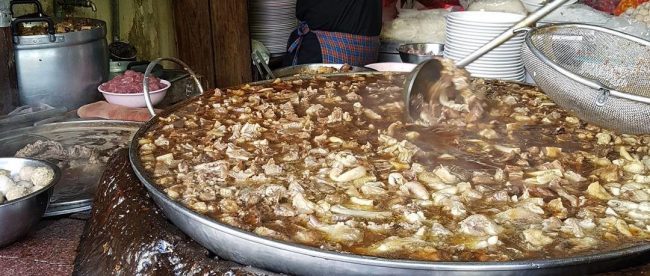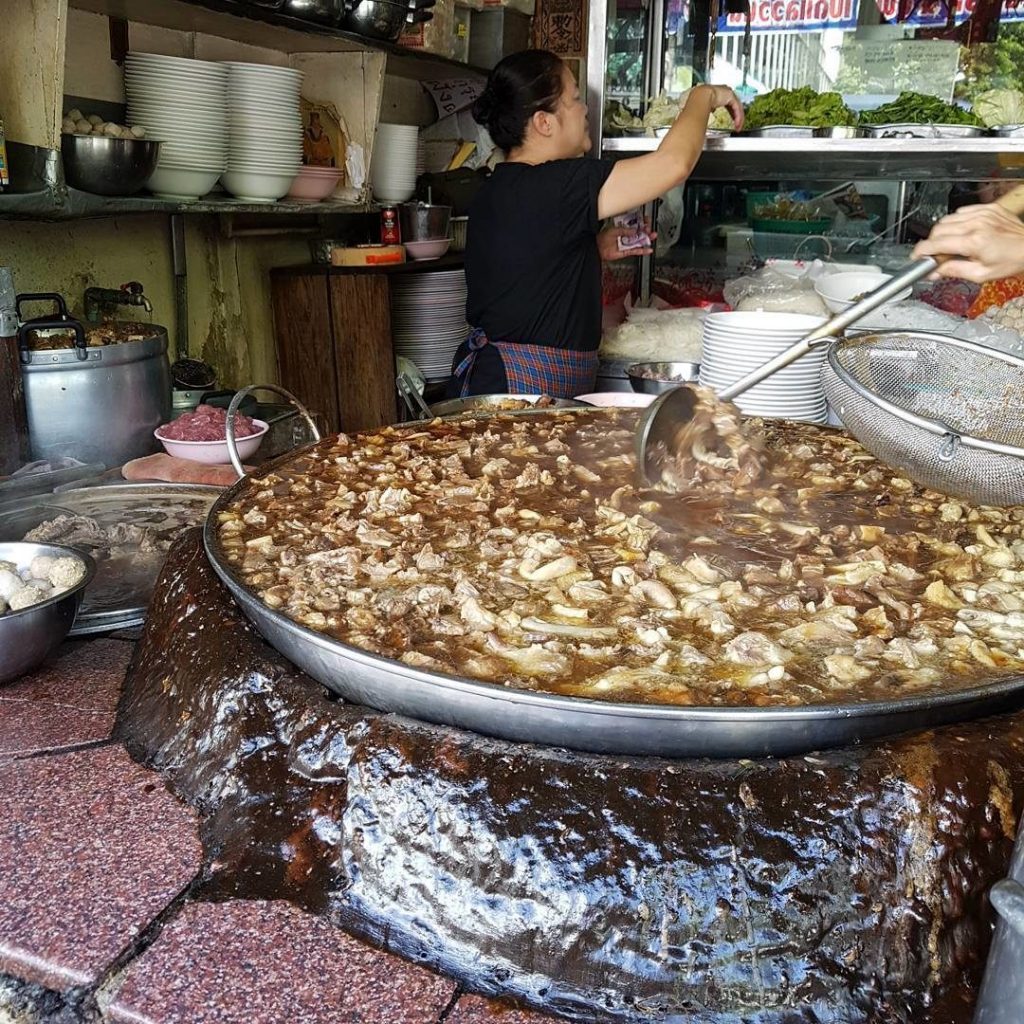Perpetual Stew

In general, if you’re at home and hungry, most of the food in your house isn’t all that old. Maybe you have some leftovers in the fridge; they’ll be good for another few days. The bananas on your counter may last a week. (Bananas last only a couple of days in my house as they get eaten quickly, so please don’t take my estimate is scripture.) Maybe you have meat in the freezer that is a couple of months old, and there’s probably some canned foods in your pantry that will last three or four years. Beyond that, though, you’re taking a big chance.
And then there’s the 45-year-old beef stew.
No, that stew isn’t in your fridge or simmering on your stove. It’s at Wattana Panich, a noodle shop in Bangkok, Thailand. And it has been for more than four decades. And as Great Big Story explains, it really is the same soup that it was in the 1970s; “not [just] the same recipe, [but] literally the same soup; same giant pan, same broth, same soup.”

That’s the stew, pictured above, via Atlas Obscura. Called “neua tune,” it’s not all that dissimilar from what you’re familiar with if you’re a beef stew fan. There are noodles, some vegetables, various types of meat (e.g. pre-boiled meat, tripe, some raw trimmings left over recipes, etc.), and of course, broth. The big difference is that the broth is never thrown away. Every night, the owners of the family-run business drain the liquid from that giant pan. Some of it is stored overnight, but the starter amount sits on the stove, simmering, until the next morning, per NPR. That starter broth was first made in 1974, and the owners — now approaching their fourth generation — have been following the same process ever since.
This unique recipe gives the broth a unique flavor — richer and more aromatic than you’d usually expect. Per Channel News Asia (CNA), “the smell is sweet and rich. Star anise. Cinnamon. Black peppercorns. Garlic. Nearly ten kinds of aromatic Chinese herbs and spices soaked in the dark soup that has been simmering here for more than 40 years,” New spices are added as needed; as one of the owners, Nattapong Kaweenuntawong, told CNA, “we keep tasting. There is no recipe.”
The pan is cleaned regularly and you’re probably not eating months-old meat (except for the microscopic bits in the broth itself), so don’t worry about that. The biggest clue that the soup is so old is that brown wall encompassing the pan and cracking the countertop — that, per Great Big Story, is “45 years of broth spillover,” which over time has congealed into an ever-growing wall of old soup.
The soup is very popular, with generally solid-at-worst reviews on TripAdvisor. Per NPR, the eatery goes through more than 150 kg of meat each week, serving up their dishes one bowl at a time. A bowl of 45-year-old soup goes for about 100 Thai Baht, or a bit more than three dollars.
Bonus fact: Stew isn’t the only perpetual recipe out there. If you’re a fan of sourdough bread, it can daisy-chain forever in the same way. Just ask Lucille Clark Dumbrill of Newcastle, UK. According to the Casper (Wyoming) Star-Tribune, Dumbrill’s sourdough breads come from a sourdough starter that was originally created in 1889. As the Star-Tribune jokingly notes, “it has lived through the turns of two centuries, the Great Depression, World War I, World War II, the Cold War, Korea, Vietnam and beyond, blues, jazz, rock ’n’ roll and 23 U.S. presidencies. It’s older than the state of Wyoming.”
From the Archives: The Recursive Candy Bar: How Kit Kats are kind of, sort of, a perpetual candy bar.
